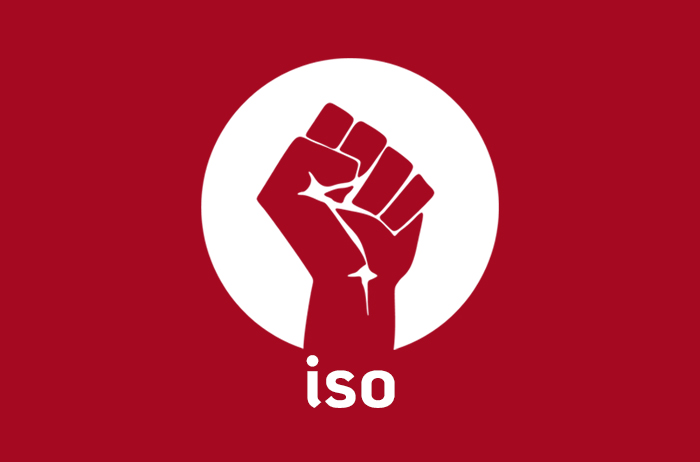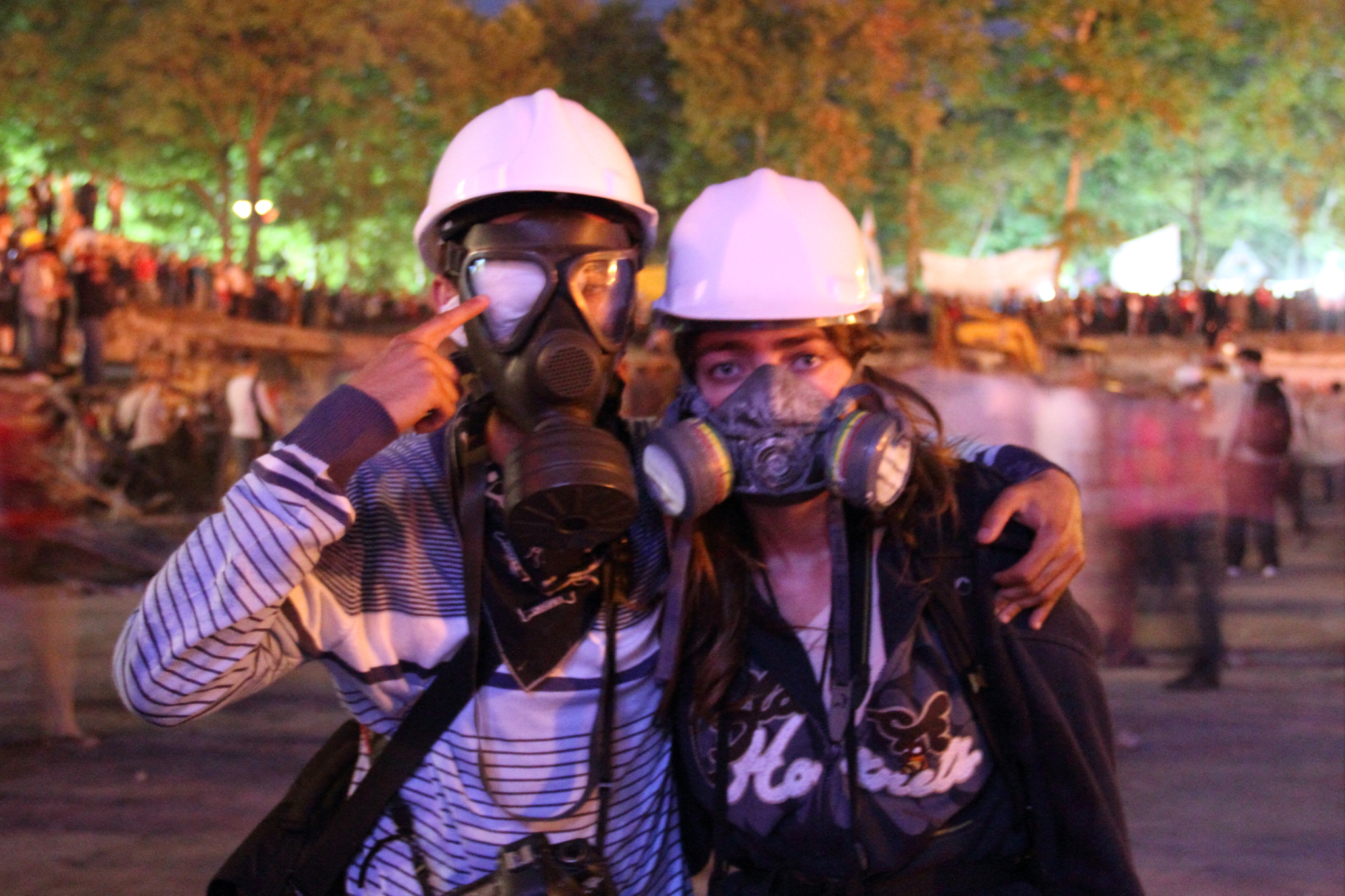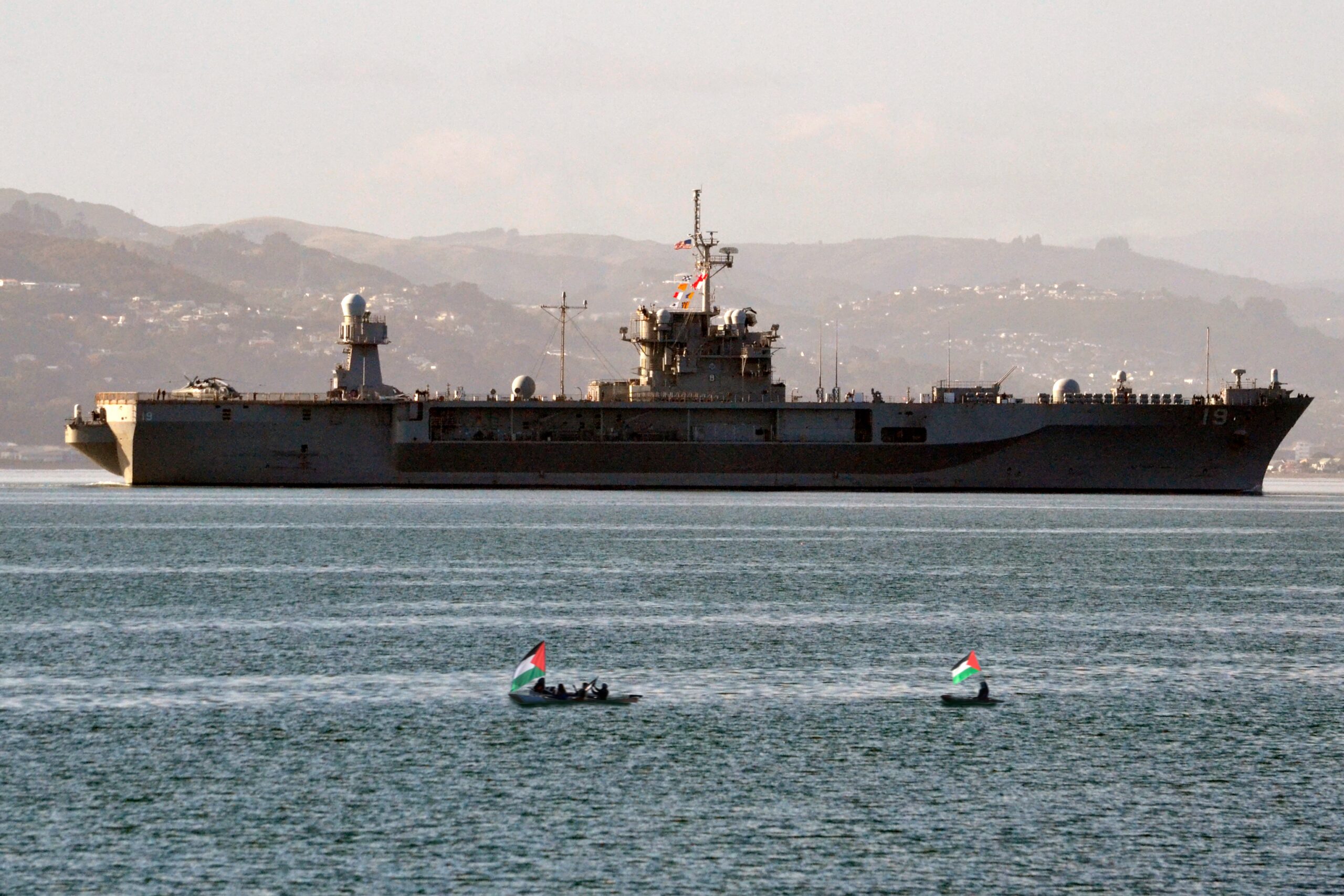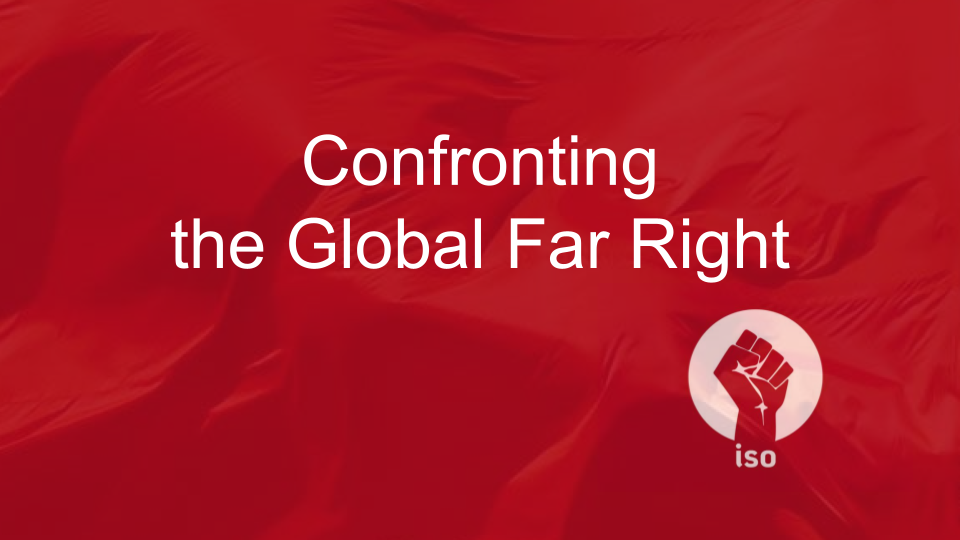The following was presented as a talk at the 2025 International Socialist Organisation hui-ā-tau annual conference. A recorded version is available here: https://youtu.be/JQJFCpdEnW8
Global Overview
The already meagre projections of recovery announced by major capitalist institutions last year fell even further after the rollouts of USA president Donald Trump’s tariffs regime. Throughout the period of the recovery from Covid lockdowns, we have seen a massive transfer of wealth from the poor to the rich, and can only see this continue into the near future.
Trump and Tariffs
In the midst of an already dour outlook comes Trump’s much touted tariffs policy. The justifications are a joke, and these processes are not any genius plan or geopolitical strategy, but simply a means for Trump to enrich himself. If the vast majority lose from these tariffs, but even a tiny section of capitalists come further into Trump’s orbit, then it’s a success for him. That is what’s happening. Combine this with his latest forays into the cryptocurrency market and it’s clear he is just fleecing all that he can, without regard to wider economic problems.
The so-called “Big Beautiful Bill” entails massive tax cuts for the wealthy, tax increases for the poor, and brutal cuts to Medicaid and Medicare among so many other attacks.
Recently, economists have been stating that international power politics is increasingly about economic advantage; in particular, the claim is that a hegemonic power like the USA will nowadays increasingly try to improve its economic advantage not through productivity growth or investment at home, but by intimidation and force over other countries. This has played out in Ukraine’s mineral deal with the USA, and with Qatar in its gifting to Trump of a palatial 747 airplane. Indeed this is occurring all across the Western World, forcing governments to sign away natural resource extraction rights to American companies, and invest heavily in defence spending at the demand of the USA president.
Of course this is simply the veneer of “international trade and cooperation” falling away. International cooperation among equals to increase trade and markets was always an illusion. It has always been a system of securing profit making, by achieving easier access to raw materials, lower cost labour, or new markets. There never has been trade among equals; there never has been ‘fair’ competition among capitals of broadly equal size within economies or between national economies in the international arena. The large and strong have always eaten the weak and the small, especially in economic crises. And the imperialist core in the Global North has extracted value and resources in the trillions out of the peripheral economies over two centuries.
The result of Trump’s tariffs and the new global policy of protectionism will be a slump and a likely return to more inflation. As I talked about last conference, inflation is an effective measure to offset the inability to sell profitably on to the consumer, another marker of the collapse in the rate of profit.
Ruling Class divided?
There is a kind of separation in the ruling class in their support of these policies. Tech oligarchs largely don’t care about tariffs; their profitable products are not commodities manufactured but rather data and Internet space, or financial speculation on new technologies. You can see this difference in the silence from Facebook and Google whose profits largely come from intangible products, as opposed to Apple’s response against tariffs since its profit relies on devices produced in China. The tech oligarchs also recognise the quid-pro-quo style of governance and see the advantages of the deregulation in AI and removal of other laws that got in the way of speculative profit.
But the homegrown manufacturing capitalists in the USA have different interests, because they are no longer able to compete in many world markets. Supporting them is the stated aim of the Trump administration. Engels argued in the 19th century: free trade is supported by the hegemonic economic power as long as it dominates international markets with its products; but when it loses dominance, it will adopt protectionist policies. This is what happened in late 19th century UK economic policy. Now it is the turn of the USA.
Ricardo is wrong (as are the neoclassical economists of today) in claiming that all countries gain from international trade if they specialise in exporting products where they have ‘comparative advantage’. Free trade and specialization based on comparative advantage does not produce a tendency towards mutual benefit. It creates further disequilibrium and conflict. This is because the nature of the capitalist production processes creates a tendency toward increasing centralization and concentration of production, which leads to uneven development.
On the other hand, the protectionists are wrong to claim that import tariffs and other measures will restore a country’s previous market share. In all economies, productivity growth and lower production costs depend on increased investment in productivity-enhancing sectors. But in capitalist economies, that depends on the willingness of profit-driven companies to invest more. If profitability is low and/or falling, they will not do so. That’s the experience of the last two decades in particular. Manufacturing capital wants a return to war-time policies and Cold War strategy to build domestic industry, science, and military forces. But that would only work if there was a massive switch to direct public investment through publicly owned companies with a national industrial plan. Capitalists as a whole don’t want that and neither does Trump. Industrial strategies like this are not only the purview of the Right. These are also foundational policies among left wing USA senators such as Elizabeth Warren and Bernie Sanders.
The post WWII international trade institutions, such as the World Bank and IMF, as well as peripheral countries such as our own, are alarmed at the declining adherence to world trade rules as this signals a deep change in geopolitics. The ruling class internationally is dividing itself: some are pulling the strings of nationalism to push for more profit, while others still rely on global trade.
The fundamentals are still the same
There is a change in view among part of the elite on economic policy, particularly since the Global Financial Crash of 2008 and the ensuing prolonged depression of economic growth, investment and productivity. In the immediate post-WWII period, international trade and financial agencies were formed under the control primarily of the USA. Profitability of capital in the major economies was high and this allowed international trade to expand along with the revival of European and Japanese industrial power. This was also the period when Keynesian economics dominated: i.e. the state acted to “manage” the economic cycle and support industry with incentives and even some industrial strategy.
This “golden era” came to an end in the 1970s, when the profitability of capital fell sharply (according to Marx’s law) and the major economies suffered the first simultaneous slump in 1974–75. Keynesian economics was exposed as a failure and economics returned to the neoclassical idea of free markets: the free flow of trade and capital, deregulation of state interference with private ownership of industry and finance, and the crushing of labour organisations. Profitability was modestly restored in the major economies and globalisation became the mantra; in effect this was simply the expansion of imperialist exploitation of the periphery under the guise of international trade and capital flows.
Protectionism internationally is being combined with government intervention domestically in decimating government services, ending climate change mitigation spending, deregulating finance and the environment, and boosting the military and homeland security forces (particularly to increase deportations and intimidation). This is happening globally and is the real outlook for the coming year. But to understand these tendencies and what gives rise to them we have to go back to our fundamentals.
The Law of Value
What is value? Marx starts from the view that value is the result of the exertion of human labour. Without any exertion by humans, nothing is produced that keeps human beings alive and well. So that means that value is not some metaphysical abstraction but is actually physical – it exists in objective reality.
The exertion of human labour (both objective and mental) is material and can be measured in terms of labour time (hours, minutes, etc.). Nature also has value (to us) in that, without air, the planet, trees, forests, water, etc. there would be no human life. So nature has a use value to humanity. But it requires the exertion of human labour to turn this natural use value into other specific uses for humanity: conversion from forest to timber to house requires the exertion of human energy (and thus labour).
But it is only under capitalism that the use values required and generated by human labour turn into commodities for sale on the market for private profit. The results of human labour are converted into commodities which then have value with dual aspects: use value for the purchasers of commodities and exchange value, because it becomes manifest as money through exchange. These two aspects of value within the commodity reveal the basic contradiction of capitalist production, i.e. between production for social need (use value) and for profit and the accumulation of capital (exchange value). That is why Marx starts with the commodity in Das Kapital.
Under capitalism the only objective way of valuing a product of human labour (a commodity in itself) is by measuring the labour time involved, not by each consumer’s subjective opinion of its value. Commodities have two aspects, a use value and an exchange value because they are products of both a specific (concrete) type of labour, which produces its use value, and of abstract labour, which produces its exchange value. Abstract labour is the expenditure of human energy irrespective of the specific type of activity. It is the transformation of abstract human labour into the value of the commodities which is the focus of the law of value. Marx holds that there is a law-like relationship between the labour expended under capitalist production and value. The quantity of labour (measured in time) determines both the quantity of value produced, since value is labour, and the quantity realised through redistribution.
Realising Value
Value does not emerge from abstract labour immediately, but only after some intermediate processes. The generation of value goes through different stages. If the capitalist production process has been started and not yet finished, the labourers are performing abstract labour and are in the process of creating the commodity’s value. At this stage the value is potential – that is, not yet realised because the commodity itself, not being finished, is still being created and thus exists only potentially. When the production process is completed and the commodity is finished but not yet sold, the abstract labour that has gone into it becomes the value produced, or contained, embodied, in the commodity. The material substance of this is abstract labour. Since a commodity must be sold in order to realise its value, the value contained in the commodity is also its potentially realised value. When the commodity is sold, the value contained in it becomes realised value. This realised value is represented by money, the universally accepted measure of value.
In a capitalist economy, due to competition among the many producers of the same commodity, a commodity may not realise the value contained in it and so not realise all the labour which has been needed for its production. Competition on the market decides the socially necessary labour time required to produce and realise the value of commodities in an economy. Profitability varies for different producers, but through competition there is a tendency towards an average profitability. So the price of a commodity will tend to be set by the cost of production plus the average rate of profit across the economy. The value contained in a commodity is thus modified into a price of production.
The major factor influencing profitability is technology. New technologies replace workers with means of production. They produce less value and surplus value but realise more value at the cost of the technological laggards. The latter, in their turn, will in turn shift to more efficient technologies. It is this continual modification, driven by changes in technology and competition, that tells you that Marx’s law of value is not a static equilibrium theory, but instead that the process of commodity production is in continual motion.
There are three other aspects that are essential to the law of value.
1. Surplus value
Marx’s great discovery of the Law of Value was “surplus value”. In capitalist production, there are owners of the means of production and there are the rest of us who own only their labour power. The owners of the means of production employ human labour power to produce value contained in commodities, which are owned and sold by the owners of the means of production. But the owners do not pay the full value contained in the commodities to those selling their labour power to produce them. The owners of the means of production pay for the use of the machines and raw materials and the wages of the workers employed. But they receive in value contained in the commodities and realised on the market a greater value than their costs. So there is a surplus value that is appropriated by the owners. This can be broken down into profits kept by the producer capitalists, interest paid to the finance capitalists, and rent paid to the landlords. This surplus value extraction is what Marxists term “exploitation”.
2. Competition
As mentioned above, individual capitalists are continually striving to increase surplus value, in competition with other capitalists. They can do so by increasing the workforce and/or by increasing the intensity and hours of work by labourers. But there are physical and social limits in doing this. Moreover, other capitalists may introduce new technologies that speed up the productivity of their workforce and so reduce the hours of work (or cost in value) necessary to make a commodity below the average. Such capitalists can then undercut those with less advanced technology.
This competition forces all capitalists to invest more and more in technology/machinery to raise the productivity of labour and reduce relatively the use and cost of labour power. So the ratio of investment in constant capital (machinery and raw materials) will tend to rise relative to investment in labour power (variable capital and workers’ wages). This ratio is called the “organic composition of capital”.
3. The organic composition of capital
The Law of Value says that only human labour can create value. Machines can produce more units of commodities per worker, but without the exertion of human labour machines cannot make commodities. As the rise in the organic composition of capital can only come about by capitalists investing more surplus value in machines relative to investing in human labour power, there is a tendency in capitalist production for the subsequent increase in new value to be less than the increase in investment employed. In business terms, this is called the “declining return on investment”. In Marxist terms: the rate of profit in a capitalist economy tends to fall over time.
Thus the Law of Value leads to surplus value, the organic composition of capital, and the rate of profit on capital. From these abstractions we can continue to apply these scientific postulates to the modern day to help us see through reformist promises of a “green new deal” or any illusions of a nicer face to capitalism, and we can focus on the real target: the abolishment of this system.
The case I want to make to you is: despite what is written by popular Left wing academics, capitalism is not “dead”. Capitalism has not fundamentally changed from its abuses and horrors of the past 200 years. It is still a system of crisis and will continue to be. It has not become a sort of “neo-” or “techno-feudalism”. Its core aim is still the same: restoring the rate of profit at all cost.
The periodic crisis of capitalism
Marx’s theory of crises under capitalism is composed of various elements and levels of causation that must come together to explain slumps in production, investment, and employment, all of which embody the definition of a crisis. Before capitalism, crises were products of scarcity, famine, and natural disasters. Now, they are products of a profit-making money economy: above all they are human-made and yet appear to be outside the control of humanity.
There is no systematic presentation of a theory of crisis in Marx’s writings – his work lies quite unfinished. But it can be claimed that the elements of such a theory can be found in various works including Das Kapital volumes 1–3, and in Theories of Surplus Value posthumously published by Kautsky.
To remain competitive, capitalists must invest an ever-increasing amount of capital in machinery. Therefore, the proportion of capital spent on machinery increases in relation to the capital spent on living labour. Yet, as Marx argued, the exploitation of living labour is the only source of profit. Machines do not generate new value. If capitalists spend more on machines and less on the only source of surplus value and therefore profits, then their profit rate will fall. And if profit rates fall, capitalists aren’t so keen to invest, which can bring on a slump. The unplanned and competitive nature of the system means that behaviour which is good in the short-term for individual capitalists has, in the long run, a detrimental effect on the profit rate of the capitalist class as a whole. As stated previously, Marx described this contradiction as being the tendency of the rate of profit to fall.
Countertendencies
Capitalist industry is thus beset by an absurd contradiction. As technology becomes more productive and more sophisticated, the profit rate of capital investment trends downward. When the profit rate falls sufficiently, it reaches a tipping point into crisis. This leads to an investment strike by capital. When profits fall, less is available for further investment.
Compelled to continuously reinvest their capital at the most profitable rate, capitalists are drawn to certain policies and ventures to chase the highest return. These are what we would call countertendencies. These countertendencies temporarily dampen or reverse the fall in the rate of profit. When they have exhausted their action, the tendency emerges again.
The typical countertendencies we would see are:
- Increasing the intensity of the exploitation of labour, thus increasing the rate of surplus value through union busting, legislative changes, higher unemployment, real wages not meeting inflation, and longer work hours for the same pay.
- The relative cheapening of elements of constant capital, lowering the organic composition of capital, i.e. widespread adoption of new technologies, decreasing costs for manufacture, increasing access to raw materials, and the degradation of nature.
- Extracting profits from foreign trade for a national economy, i.e. securing new markets, accessing lower labour costs, tax avoidance, access to raw materials, and imperialism.
- Investment in stock, bond, and speculative markets for financial gains, i.e. what’s called fictitious capital, cryptocurrencies, derivatives, short stocks, etc.
- Increasing the rate of inflation. Using an excuse of higher demand companies raise profit margins, thus socialising the cost of unproductive capital.
It is these countertendencies that introduce cyclical episodes in the long term downward trend of the rate of profit. A crisis due to a slump in production is necessary to correct and reverse the fall in the rate of profit. The flavour of the crisis, the surface cause if you will, is cultured by the countertendencies that were implemented when facing the previous crisis of profitability. And successful recovery of the profit rate only serves to make the next crisis deeper.
Marx’s law of the tendency of the rate of profit to fall suggests an inexorable decline over decades (and longer) in the profitability of capital accumulation. It suggests a future where all of the countertendencies’ attempts to recover the rate of profit have been exhausted and as such there would be an end to any increase in profit. To quote Marx directly:
It is enough to mention the commercial crises that by their periodical return put the existence of the entire bourgeois society on its trial, each time more threateningly. In these crises, a great part not only of existing products, but also of the previously created productive forces, are periodically destroyed… and how does the bourgeoisie get over these crises? On the one hand by enforced destruction of a mass of productive forces; on the other, by the conquest of new markets, and by the more thorough exploitation of the old ones. That is to say, by paving the way for more extensive and more destructive crises, and by diminishing the means whereby crises are prevented. Once the cycle begins, it is regularly repeated. Effects, in their turn, became causes, and the varying accidents of the whole process, which always reproduces its own conditions, take on the form of periodicity.
The theory of crisis is a cornerstone of Marxist politics: firstly because it declares that capitalism is an irrational system, that it can only be a transitory stage and cannot continue indefinitely; and secondly because the theory itself describes (or lays bare) the strategies and tactics used by capitalists.
Alternative (incorrect) theories
The alternative Marxian theories of crises that ignore and/or reject Marx’s law of profitability as being relevant fall into three camps. I’ll cover two of these here, which form the basis of reformist projects that we interact with. I’ll leave the third theory, disproportionation, for future discussion.
Incorrect theory 1: Crises are caused by instability and reckless anarchy in the banking and financial sector
This theory holds that crises originate in the financial/speculative sphere due to extremely high levels of debt, rampant speculation, a permissive monetary policy, the loosening of rules governing borrowing and lending due to deregulation etc.
In actuality, the origins of these crises are in the productive sphere, in the creation of commodities. For example, if profitability falls in the productive sectors, less surplus value can be appropriated by the financial sectors. These sectors, by lending less, see their profits fall further. The foundations for a crisis were laid in the productive spheres and then extended into the unproductive ones. When the speculative bubble explodes, financial firms go bust and the crisis moves from the financial and speculative ones to the productive ones. Thus, this financial crisis is a catalyst of the crisis of profitability, but the origin of the crisis is not in finance and speculation.
The danger of arguing that it is unbounded finance capital that is at the core of crises is that this would lead us to believe that crises are simply the result of policy mistakes. The corollary of this theory, then, is that by simply fixing the policy mistakes we could fix capitalism.
Incorrect theory 2: Crises are caused by underconsumption by the working class, and slumps occur when demand for consumer goods falls
If commodities are unsold, capital suffers a loss and the rate of profit falls. This theory posits then that lower wages reduce workers’ consumption and thus lowers the rate of profit, causing a crisis. This theory can be expanded simply as: “inequality causes crisis.” Rising inequality of wealth in the major capitalist countries since the early 1980s has been presented as the main cause of crises and in particular of the great recession of 2008. This remains the dominant view of most Leftist and many Marxist economists.
The argument goes that the financial crisis was caused by debt, mostly in the private sector. As wages were held down, workers were forced to borrow more to get mortgages to buy homes or loans to buy cars and maintain their standard of living. These becoming more unaffordable, supposedly the sheer weight of debt could not continue to be supported and the house of cards came crashing down. But empirical evidence from multiple economic analyses shows that the highest wage rises occur just before a crisis, and that there is no evidential link between inequality and crisis.
Furthermore, the same corollary of this theory applies: if it’s just a problem of low wages, or of poor distribution of wealth, then those could be fixed through policy decisions, and again we are back at reformism. As Smith, Butovsky, and Watterton write in Twilight Capitalism:
In order to win a world in which we can truly realize our most authentic human capacities, we need to act in ways that are hard-headed, strategic and disciplined. Capitalism cannot be reformed, tweaked or reoriented. Rather, it must be replaced … and that, quite simply, will be no easy task. The existing capitalist ruling classes will do everything in their power to prevent the destruction of the system to which they are wed. We must be no less determined in our efforts to prevent them from having their way.
Conclusion
We have to look beneath the appearance of events, beneath the proximate causes, to see the essential or ultimate cause. Critics hold that the “rate of profit to fall” theory is mono-causal and is thus obviously wrong because all crises are different and cannot have the same cause. Those critics do not see that the same cause can and does manifest itself in different forms depending on the continuously changing effects of falling profitability on the socio-economic relations and processes.
Das Kapital starts with the abstract and proceeds, step by step, to the concrete. This is vital to understand because the biggest sin committed by mainstream bourgeois economists is to look only at the appearance of things and not see the essence. They look only at the surface and do not dig deeper.
I’ll leave you with this: Marx’s tendency of the rate of profit to fall remains integral to any Marxist theory of crisis under capitalism. The combination of the law of the tendency and of the effects of the countertendencies offers a causal explanation of the cyclical nature of capitalist accumulation, with an increasing body of empirical evidence to back it up.
Further Reading
The Law of Accumulation – Henryk Grossman
Twilight Capitalism – Murray E.G. Smith, Jonah Butovsky and Josh J. Watterton
Capitalism in the 21st century – Guglielmo Carchedi and Michael Roberts
The Long Depression – Michael Roberts









